Fashion’s Architecture of Reinvention: Alexandra Byrne’s Sustainable Romanticism
From Regency layers to superhero durability, one designer’s fashion philosophy offers a manifesto for a less disposable future
Editor’s Note: Yelena Fradlis returns to Cognitive Frames with her signature insight into costume design as cultural argument.
Having spent over 15 years building fashion brands that help people construct their aspirational selves, Yelena finds in Byrne’s work a complete worldview of how clothing creates meaning.
This is costume design as resistance—against fast fashion, against cultural amnesia, against the false binary between historical accuracy and contemporary relevance. — DH
Alexandra Byrne designs costumes like a philosopher builds arguments—through careful layering, strategic accumulation, and the understanding that complexity emerges from intelligent constraints
Her name is synonymous with period drama—lavish, layered, and alive with storytelling. From the brocade-laden courts of Elizabeth: The Golden Age and the sherbet confections of Autumn de Wilda’s Emma (2020), to the fantastical worlds of Doctor Strange (2016), Byrne’s work is beautiful, rigorously researched and built on an understanding that clothes are never mere ornament.
Her work achieves historical authenticity while maintaining contemporary relevance, but in Emma, that duality becomes something more quietly revolutionary: a manifesto for how fashion could function in an age of ecological crisis.
The Architecture of Reinvention
In the early 19th century, white muslin dresses were the most democratic textiles—affordable, washable, endlessly reworn. For a character like Emma Woodhouse, wealthy and perpetually curated, this might sound like sartorial purgatory.
Byrne’s solution was practical and poetic: layered silk skirts in radiant tones—mint, saffron, rose, pistachio—wrapped around those same muslin foundations.
Anya Taylor-Joy glides through Highbury as an early template for modular dressing. One base garment. Infinite reinvention. Each silk layer signals mood, status, and story, but the principle remains elegantly simple: reuse, reimagine, refresh.
The effect is sumptuous on screen, but the lesson translates directly to contemporary closets, more creativity within a fixed environment. The need to acquire more and more is replaced by a finer eye towards creativity.
This was historically accurate innovation. As she explained in Filmmaker Magazine, the Regency era represented “the biggest change that had ever happened in women’s fashion, to go from big, heavy, brocade corseted court dresses to these sheer muslin dresses.”
Byrne’s approach begins with total historical immersion.
“I like to know that if I’m changing something or breaking the rules, I’m making those decisions deliberately as opposed to through ignorance,” Byrne once noted. This distinction defines her entire methodology.
For Emma, this meant studying museum pieces, fashion plates, and surviving garments to understand not just how Regency clothes looked, but how they functioned. Several of Emma’s pieces, including her pale pink spencer jacket, are direct copies of museum garments
According to Byrne, the original fabrics were “quite unsophisticated in terms of how they’re made and cut, but the fabrics are just so delicate and so light—that’s not through age, that was the fashion of the time.”
Each garment served multiple functions, every element could be recombined, and the aesthetic emerged from practical constraints.
Sustainable Superheroes?
Here’s where Byrne’s split career between period dramas and Marvel spectacles demonstrates her singular worldview. As she notes, “both superhero films and period films, require the same core skill: problem solving”
Working on the superhero costumes of Guardians of the Galaxy and Doctor Strange taught her techniques she’d later apply to Mr. Knightley’s riding pants:
“You could effectively say he’s wearing part-super hero riding britches,” describing how she fused leather and Lycra using Marvel methods.
This cross-pollination is core to Byrne’s philosophy of creative reinvention of clothing and styles:
Byrne approaches each project as an engineering challenge: How do you make garments that serve story, survive action, and create meaning through materiality?
This engineering mindset—where function drives beauty rather than undermining it—connects directly to fashion history's most innovative periods.
History’s Closet: Other Lessons in Reinvention
Byrne has long championed this ethos, often because history itself demanded it. Clothing in the past was expensive, textiles precious. Wardrobes were modular, multifunctional, and made to last.
That necessity bred an elegance we often mistake for extravagance
From Elizabethan mix-and-match bodices to Marvel's practical durability requirements, Byrne consistently applies this historical wisdom: the most elegant solutions emerge from intelligent constraints, not unlimited choice.
That necessity bred an elegance we often mistake for extravagance. When Byrne resurrects these techniques for contemporary screens, they resonate as something more than period accuracy—they become quiet protest against our culture of disposability.
In Emma, this meant creating "one-offs" where vintage fabrics, jewelry, and embroidery could be worked into new pieces. Each costume became a form of haute couture upcycling, designed to function across multiple scenes—proof that even fantasy worlds can embrace sustainable practices.
These strategies were not statements in 16th or 19th-century England; they were survival. But when Byrne resurrects them for the screen, they resonate as something else: a quiet protest against disposability.
From Highbury to High Street: The Modern Takeaway
What does this mean for us, watching Emma sweep through Highbury in pistachio silk? That the most modern thing about her may not be her confidence, but her closet.
Byrne’s work asks us to consider:
What if our wardrobes behaved more like Emma’s? A single slip dress, worn under a rotation of skirts, jackets, or bold accessories, becomes ten outfits. A neutral foundation, reinterpreted endlessly, is suddenly luxury.
Fashion today is in crisis—ecologically, ethically, existentially.
Byrne doesn’t sermonize; she stages a Regency comedy and lets the clothes do the talking. But the message lingers long after the credits: elegance is not about accumulation, but imagination.
Alexandra Byrne reminds us that fashion’s future might just live in its past—and that the most romantic thing we can do for our clothes is keep them in play.




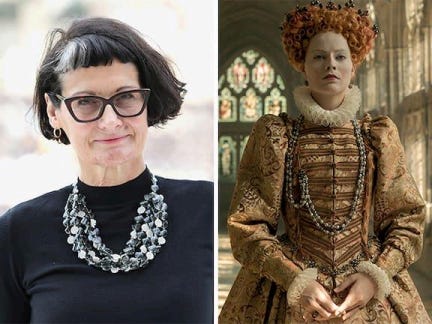
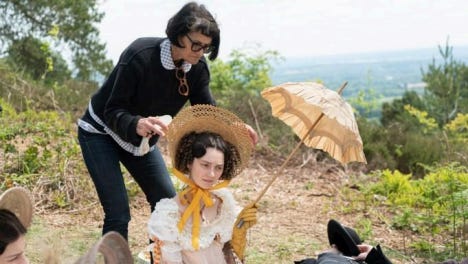
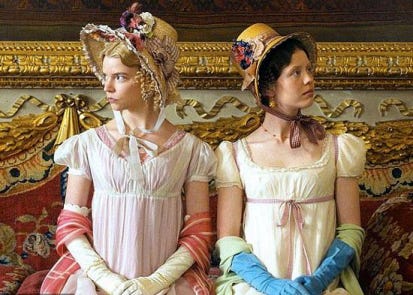
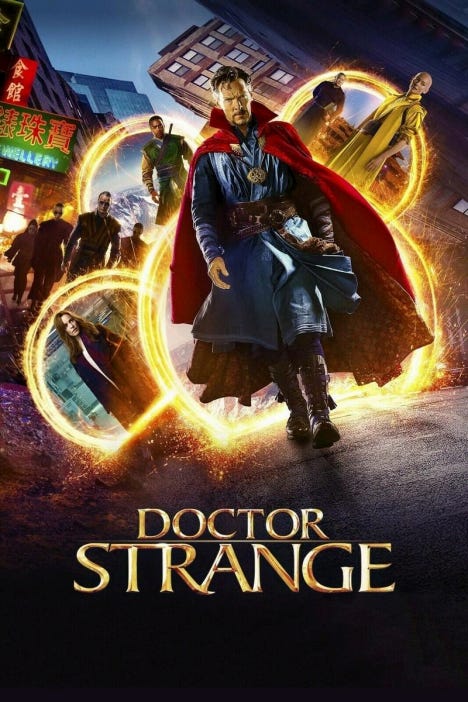
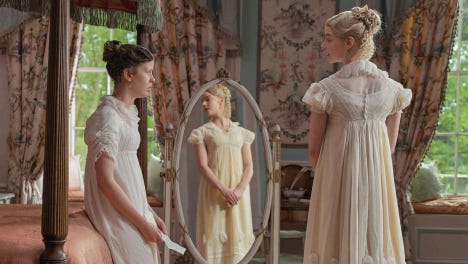
The Fantastic Four's Suits: A Sustainable Fusion of Retro Style and Future Tech
As film enthusiasts with an eye for detail, we're always captivated by the artistry that brings a movie to life. Alexandra Byrne's costume design for the new Fantastic Four isn't just visually stunning—it offers a compelling vision for the future of cinematic costume: one that embraces sustainability and technological innovation.
By grounding the film in a parallel-universe 1960s, Byrne cleverly sets the stage for a narrative where resourcefulness and ingenuity are key. Imagine if these iconic baby-blue suits weren't just newly fabricated, but cleverly repurposed elements from existing 1960s garments, infused with cutting-edge technology? This concept of creatively reusing and adapting materials aligns perfectly with a modern ethos of sustainability.
Furthermore, envisioning these suits as a fusion of retro aesthetics and futuristic tech opens up exciting possibilities. Perhaps the fabric itself incorporates advanced fibers with unique properties related to each hero's powers, seamlessly integrated into the vintage design. This blend of old and new not only creates a visually distinctive look but also speaks to a future where technology and environmental consciousness go hand-in-hand.
Byrne's thoughtful approach to the Fantastic Four's costumes can inspire us to think differently about the clothes we see on screen and, indeed, the clothes in our own wardrobes. What if we viewed garments not as disposable items but as potential building blocks for something new and innovative?